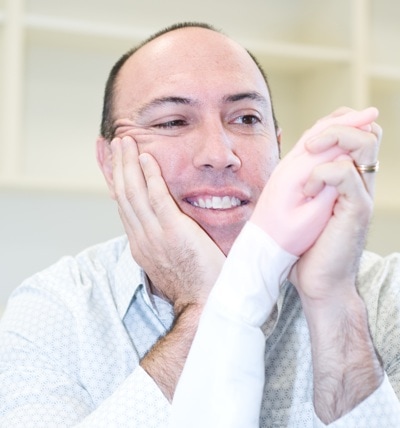This commentary was first published in the Journal of Pain. We thought it was worthwhile to publish it again here:
Almost everyone suffers acute pain. Why do most recover, but an unfortunate few descend a downward spiral of social, personal and economic disadvantage? One hypothesis that has been interrogated for two decades is the fear avoidance model [14]. This model argues that it is the overly fearful people who end up with chronic pain: they avoid movement and activity so as to not provoke pain and this in turn leads to disengagement from meaningful activities, disability, and depression. Therein, so the model suggests, begins a vicious cycle. That fear of pain might have a larger impact on behavior than pain itself was, in fact, suggested some time ago [1,7], and the subsequent development of the fear avoidance beliefs questionnaire [15] led to a great number of clinical and experimental investigations.
Nonetheless, the case is not settled and some might argue that the fear avoidance model has not lived up to its considerable expectations. Some studies suggest that fear avoidance beliefs at baseline predict chronicity, with larger effects on disability than on pain intensity [4,5,16]. As with many clinical studies, the most robust studies report the smallest effects [13]. One might contend that fear is not the driving factor – patients seldom display cardinal signs of fear (unless directly confronted with having to perform the movement, for example in fear-exposure therapy [2]), – they simply avoid the movement. Avoidance would seem understandable if pain is conceptualized as a correlate of tissue damage, which it usually is [9]. Perhaps the most parsimonious conclusion of the large amount of literature in this area is that the fear avoidance model, in its current form, provides a very useful, but somewhat simplistic understanding of the development of chronicity after an acute episode. Indeed, fear of movement seldom exists in isolation from other ‘yellow flags’ [12].
Experimental evidence may help to clarify and refine the fear avoidance model. Indeed, there is accumulating evidence that pain disrupts sensory and motor processing in a manner consistent with avoidance behavior. For example, in healthy volunteers, somatosensory processing of a non-noxious cue is disrupted when it is conditioned with a subsequent painful shock to the back [3]. Furthermore, painful stimulation of the back in association with a particular arm movement induced a systematic change in the postural (ie, unintentional and automatic) activation of the trunk muscles associated with that arm movement, but not other arm movements [11]. Notably in that study, although the majority of participants returned to normal muscle activation once the movement no longer evoked the painful shock, a small proportion did not. Those few were characterized by catastrophic interpretations of back pain and injury [10]. Finally, when healthy participants were expecting low back pain because they had been injected with (nonnoxious) isotonic saline after a conditioning stimulus of (noxious) hypertonic saline [6], they used their trunk muscles differently during walking, without changing their walking speed or cadence.
In this issue of Pain, Meulders and Colleagues [8] extend this research and present a useful experimental paradigm for the investigation of fear-pain interactions. Healthy volunteers moved a joystick up and down or side to side, in order to ‘colour in’ shapes shown on a monitor. In one experimental condition, movement of the joystick in one of the directions activated a painful electric shock to the hand that was moving the joystick. In the other condition, an equal number of painful shocks of the same intensity were delivered, but they were delivered between movement trials.
Fear of the movement was measured via self-report and by the magnitude of the eyeblink startle response to the auditory probes during movements. Avoidance was estimated by the response latency between the visual cue to move and actual movement of the joystick. Several of the findings are worthy of particular mention. First, once a particular movement had been conditioned with the painful stimulus, it evoked a bigger startle response than did the other movement. This finding suggests that the paradigm had induced fear of the painful movement. Second, the response latency was increased for the conditioned movement, but not for the unconditioned movement. The paradigm had induced an unintentional delay in movement execution, which the authors argue reflects avoidance. Finally, although the conditioned movements induced more fear than the unconditioned movements, the intertrial period was associated with more fear during the unpredictable condition than during the predictable condition. The authors raise an interesting interpretation of this finding – that the predictable condition is consistent with task-specific chronic pain and the unpredictable condition is consistent with generalized pain disorders, such as fibromyalgia. Alternatively, perhaps fear is greater when people perceive that their pain is uncontrollable – a possibility that has been studied at some length. The paradigm developed by Meulders et al. [8] would seem well suited to interrogating these possibilities.
The Meulders et al. study also raises some interesting questions. For example: How important is the spatial coherence of the movement cue and the painful stimulus? How important is the movement itself – is it dependent on proprioceptive cues, as suggested by the authors, or is it associated with the command to move, or is it unrelated to both and simply the result of the cue itself? Is the impact proportional to self-reported pain-related cognitions, for example, the conviction that pain reflects tissue damage? By what mechanism might delayed movement be related to chronic problems? Clearly, much work is needed, but the approach presented by Meulders et al. certainly suggests a feasible way to proceed. Hopefully, future studies will begin to untangle these issues.
First published in: Lorimer Moseley G (2011). A new direction for the fear avoidance model? Pain, 152 (11), 2447-8 PMID: 21737203
About Lorimer Moseley
 Lorimer is NHMRC Senior Research Fellow with twenty years clinical experience working with people in pain. After spending some time as a Nuffield Medical Research Fellow at Oxford University he returned to Australia in 2009 to take up an NHMRC Senior Research Fellowship at Neuroscience Research Australia (NeuRA). In 2011, he was appointed Professor of Clinical Neurosciences & the Inaugural Chair in Physiotherapy at the University of South Australia, Adelaide. He runs the Body in Mind research groups. He is the only Clinical Scientist to have knocked over a water tank tower in Outback Australia.
Lorimer is NHMRC Senior Research Fellow with twenty years clinical experience working with people in pain. After spending some time as a Nuffield Medical Research Fellow at Oxford University he returned to Australia in 2009 to take up an NHMRC Senior Research Fellowship at Neuroscience Research Australia (NeuRA). In 2011, he was appointed Professor of Clinical Neurosciences & the Inaugural Chair in Physiotherapy at the University of South Australia, Adelaide. He runs the Body in Mind research groups. He is the only Clinical Scientist to have knocked over a water tank tower in Outback Australia.
Link to Lorimer’s published research here. Downloadable PDFs here.
References
[1] Arntz A, Vaneck M, Heijmans M. Predictions of dental pain – the fear of any expected evil, is worse than the evil itself. Behav Res Ther 1990;28:29–41.
[2] de Jong JR, Vlaeyen JWS, Onghena P, Cuypers C, Hollander MD, Ruijgrok J. Reduction of pain-related fear in complex regional pain syndrome type I: the application of graded exposure in vivo. Pain 2005;116:264–75.
[3] Diesch E, Flor H. Alteration in the response properties of primary somatosensory cortex related to differential aversive Pavlovian conditioning. Pain 2007;131:171–80.
[4] Gheldof E, Crombez G, Van den Bussche E, Cinck J, Van Nieuwenhuyse A, Moens GF. Pain related fear predicts disability, but not pain severity: a path analytic approach to the fear avoidance model. Eur J Pain 2010;14:871–9.
[5] Jensen J, Karpatschof B, Labriola M, Albertsen K. Do fear-avoidance beliefs play a role in the association between low back pain and sickness absence? A prospective cohort study among female health workers. J Occup Environ Med 2010;52:85–90.
[6] Lamoth CJC, Daffertshofer A, Meijer OG, Moseley GL, Wuisman P, Beek PJ. Effects of experimentally induced pain and fear of pain on trunk coordination and back muscle activity during walking. Clin Biomech 2004;19:551–63.
[7] Lethem J, Slade PD, Troup JD, Bentley G. Outline of a fear-avoidance model of exaggerated pain perception – I. Behav Res Ther 1983;21:401–8.
[8] Meulders A, Vansteenwegen D, Vlaeyen JWS. The acquisition of fear of movement-related pain and associative learning: A novel pain-relevant human fear conditioning paradigm. Pain 2011;152:2460–9.
[9] Moseley GL. Unravelling the barriers to reconceptualisation of the problem in chronic pain: the actual and perceived ability of patients and health professionals to understand the neurophysiology. J Pain 2003;4:184–9.
[10] Moseley GL, Hodges PW. Reduced variability of postural strategy prevents normalization of motor changes induced by back pain: a risk factor for chronic trouble? Behav Neurosci 2006;120:474–6.
[11] Moseley GL, Nicholas MK, Hodges PW. Does anticipation of back pain predispose to back trouble? Brain 2004;127:2339–47.
[12] Nicholas MK, Linton SJ, Watson PJ, Main CJ. Early identification and management of psychological risk factors ‘‘Yellow flags’’ in patients with low back pain: a reappraisal. Phys Ther 2011;91:737–53.
[13] Pincus T, Vogel S, Burton AK, Santos R, Field AP. Fear avoidance and prognosis in back pain – a systematic review and synthesis of current evidence. Arthritis Rheum 2006;54:3999–4010.
[14] Rose MJ, Klenerman L, Atchison L, Slade PD. An application of the fear avoidance model to three chronic pain problems. Behav Res Ther 1992;30:359–65.
[15] Waddell G, Newton M, Henderson I, Somerville D, Main CJ. A fear-avoidance beliefs questionnaire (FABQ) and the role of fear-avoidance beliefs in chronic low back pain and disability. Pain 1993;52:157–68.
[16] Wideman T, Adams H, Sullivan M. A prospective sequential analysis of the fear avoidance model of pain. Pain 2009;145:45–51.



